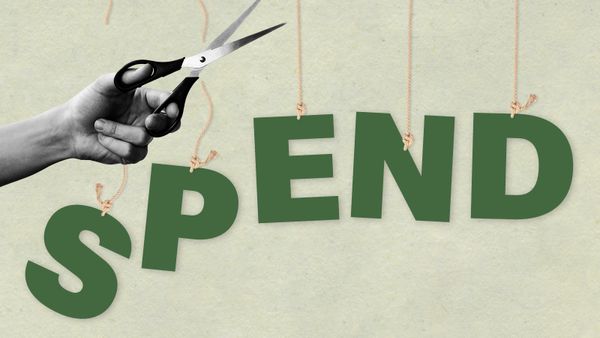Not even soaring prices and rising interest rates have stopped Americans from spending. The consumer’s willingness to keep paying high prices has kept the US economy relatively strong. However, experts suggest that this trend may soon change. High housing costs, mounting credit card debt, and shrinking savings could mean the end of post-Covid splurges, possibly as soon as this year’s holiday shopping season.
Pressures on Consumers
Housing Costs at All-Time Highs
Buying and paying for a house now costs Americans more than at any point in almost four decades. With strong demand and limited supply, it now takes nearly 41% of the median household’s monthly income to afford the payments on a median-priced home. This is the highest level since 1984.
Americans Carry Record Debt
Inflation has also affected spending on major purchases. Non-housing loan balances have more than doubled since 2003, totaling roughly $4.8 trillion. Credit card balances are growing the fastest, increasing by approximately 34% since the fall of 2021. Student loan and car loan balances have grown by 10% or less during the same period. It’s worth noting that this data is not adjusted for inflation.
Dwindling Covid-Era Windfalls
During the pandemic, households saved much more money compared to the pre-pandemic trend. The “refinancing boom” during historically low mortgage rates contributed significantly to this excess savings. As lockdowns eased, consumers unleashed their pent-up demand for experiences, which they had been denied by Covid. Over the past two years, Americans have been spending all those savings, despite rising prices and interest rates.
The End of Splurging?
Experts suggest that the consumer’s ability to keep up with high prices and debt obligations may reach its limit. A quarter or two of decreased spending could be on the horizon, forcing Americans to finally pull back on their post-Covid spending spree. As of June 2023, consumers have spent $1.9 trillion out of the $2.1 trillion in excess savings accumulated during the pandemic. The debt may become unsustainable, and savings may run out, leading to a necessary slowdown in consumer spending towards the end of this year and into early 2024.
The days of endless spending may be coming to an end. Americans, faced with high housing costs, mounting debt, and reduced savings, may have to take a breather. It’s time to rethink the splurge and prioritize financial stability.





